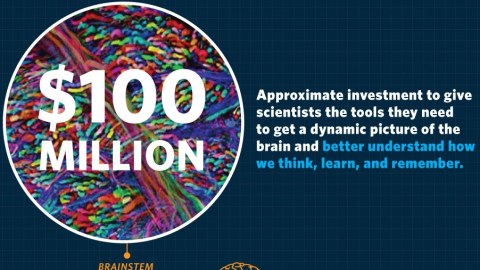Brainstorming about the BRAIN Initiative

Last month President Obama launched the BRAIN (Brain Research through Advancing Innovative Neurotechnologies) Initiative to enable scientists to create a dynamic picture of brain function.
As Dr. Francis Collins, Director of the National Institutes of Health, writes on BRAINfeedback.nih.gov:
This picture will show how circuits involving large numbers of neurons interact with each other over time and space, and will ultimately advance understanding of brain diseases like epilepsy, schizophrenia, autism, and Alzheimer’s disease.
There has been a wide range of feedback, indeed criticism, about the project, concerning the lack of participation from female scientists, the tactic of selling the project to the public with the lofty promise of tackling brain diseases, and the matter of making data publicly available. The NIH, for its part, is soliciting feedback. nucleus amiguous does a good job of summarizing the major concerns about the project, as well as debunking the “silliest critique” of the BRAIN Initiative:
…that we (meaning systems neuroscientists) wouldn’t know what to do with the data from thousands (or millions) of neurons if we had it. I can assure you that we would, but before I explore that, let’s look at the different facets of this argument. One strain of critique contends that because systems neuroscientists don’t agree on the goal, then none exists. This is like saying there is no coherent point to sequencing the genome because cell biologists, evolutionary biologists, translational researchers and clinicians can’t agree on a set of specific aims. I’m willing to bet that the scientists making this argument would be faced with the same heterogeneity in their own disciplines if they were brainstorming a similarly transformative infrastructure project.
Read more here.
And to learn more about this initiative, check out this helpful infographic here:






